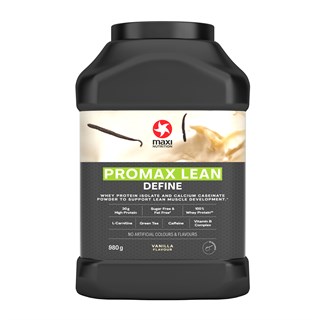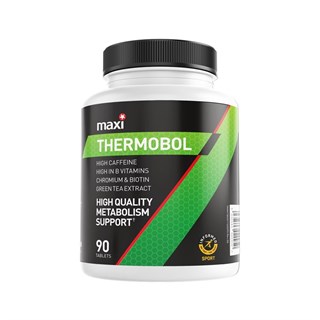The Endocrine System – Part 3
How our muscles operate during exercise is largely down to the supply, update and utilisation of metabolic substrates to produce energy. The mechanisms behind energy production rely heavily on a number of hormones. This part 3 of the endocrine system articles. I’m Gareth Nicholas, MaxiNutrition Performance Nutritionist, and I’m fascinated by the intricacies of the endocrine system and the role it plays in human health. This article provides a more in-depth look at the hormonal changes and their relationship and interactions with exercise.
Catecholamines – dopamine, Noradrenaline & Adrenaline
Exercise stimulates a rise in catecholamine hormones, in particular Noradrenaline (NA) and Adrenaline (A). Blood plasma concentrations vary depending upon the duration, intensity and type of exercise. Responsible for the ‘fight or flight’ response (sympathetic nervous system), NA and A have a similar function but activate and stimulate differently depending on the required action. For example, at lower exercise intensities NA concentrations are significantly higher than A, but both increase progressively during sustained exercise. Whereas abrupt and intense exercise spikes an increase in adrenaline and plasma glucose levels fall. It is possible to stabilise both by consuming carbohydrate whilst exercising, but that would need to be balanced based on your energy requirements. Regular training and fitness improvements reduce the catecholamine response, as the body is better placed to deal with the exercising stress.
Catecholamines and Cortisol
Exercising stress causes a fight or flight response, which initiates catecholamine release to increase heart rate, elevate blood pressure and boost energy. In support, cortisol is released to enhance glucose (energy) availability. It is often reported that high levels of cortisol (and therefore insulin release) are negative for weight management, specifically during cardio sessions, as cortisol continues to rise. The cortisol catabolic effect is to create energy which can increase fat storage and muscle breakdown. HIIT has paved the way for fat loss as the body is continually asking cortisol questions, as the intensity, work and rest periods fluctuate. HIIT sessions probably instigate a greater adrenaline response and higher cortisol spike, but a lower cortisol concentration for a given exercising period, compared with cardiovascular training. Caution: Intersperse your HIIT sessions to allow your body time to fully recover from the intensity, rising cortisol levels and stress. STRESS, RECOVER, RESPOND, REPEAT!
Dopamine & Endorphins
The feel good hormone - dopamine is part of the catecholamine family due to its structure and forms part of the fight or flight response, although has a much smaller role versus NA or A. Dopamine’s leading role is as part of the reward system; providing a sense of pleasure, to encourage you to do more of that action. This is a double-edged sword, as sugar, junk food and gambling all increase dopamine release driving an unhealthy addiction. Enough sleep, exercising, sex, listening to music, meditating and sun bathing, have all been shown to naturally increase dopamine levels. Previous research has shown a link with dopamine imbalance and mental health conditions, specifically ADHD, Schizophrenia and Parkinson disease.

Not to get confused with Endorphins, Dopamine is a mood and motivation booster, whereas endorphins are neurotransmitters that is released due to pain – the body’s natural morphine. Endorphins are released following a bout of hard exercise. Dopamine might motivate and reward you to run a marathon but endorphins are released whilst you are running, for that feel-good factor. High endorphin levels can boost dopamine production.
Thyroid Hormones
The thyroid endocrine gland is small but mighty, located in the front of the neck. From dietary iodine and tyrosine, the thyroid creates two hormones that are secreted into the blood: triiodothyronine (T3) and thyroxine (T4). These hormones are essential for cell metabolism. Under normal circumstances, if the T3 and T4 levels drop too low, the pituitary gland reacts and produces thyroid-stimulating hormone (TSH). In turn TSH, stimulates the thyroid to produce more T3 & T4. Conversely, when thyroid hormones rise to optimal levels, the metaphoric ‘thermostat’ – the pituitary gland senses this and stops secreting TSH and therefore, T3 & T4 production is reduced.

Thyroid Imbalances
In times of imbalance, for example, if too much T3 & T4 are secreted, the body cells work faster than normal, causing a condition known as hyperthyroidism (overactive thyroid). Consequence to this increased activity may lead to a quickening of your heart rate or increased intestine activity causing frequent bowel motions or even diarrhoea. Alternatively, if too little of the thyroid hormones are produced, the cells and organs of your body slow down. This is a condition, known as hypothyroidism (under active thyroid). Individuals that suffer with hypothyroidism often report feelings of tiredness, fatigue, often with a slower metabolism and unexplained weight gain.
The changes in T3, T4 and TSH due to exercise seem to be inconsistent. A number have studies have reported that short-term aerobic exercise significantly altered thyroid hormonal serum concentrations. With TSH being significantly decreased and T3 and T4 being increased. Another study showed a rise in T3 and TSH but a decline in T4 following exercise performed at moderate intensity. Whilst the data may be inconclusive on whether exercise can alter or support supressed thyroid hormones, the act or benefits of exercise are well understood.
Swimming or spinning in hormones
I know what you might be thinking, it sure is complex. Thankfully our brain and nervous systems are capable of looking after these things for us; in the majority of time. My take away point for anyone reading this is to engage in regular exercise, if you aren’t already. Try and find things that provide you with a mix of cardiovascular and resistance exercise. Pick things you enjoy to get you moving. Whatever you decide, stress your system and make it a challenge, but always create time to recover. Some is better than none, but something regular and that forms part of your lifestyle, is an investment in your future.
For more articles and information on the endocrine system and hormones, check out all four articles in this series.















